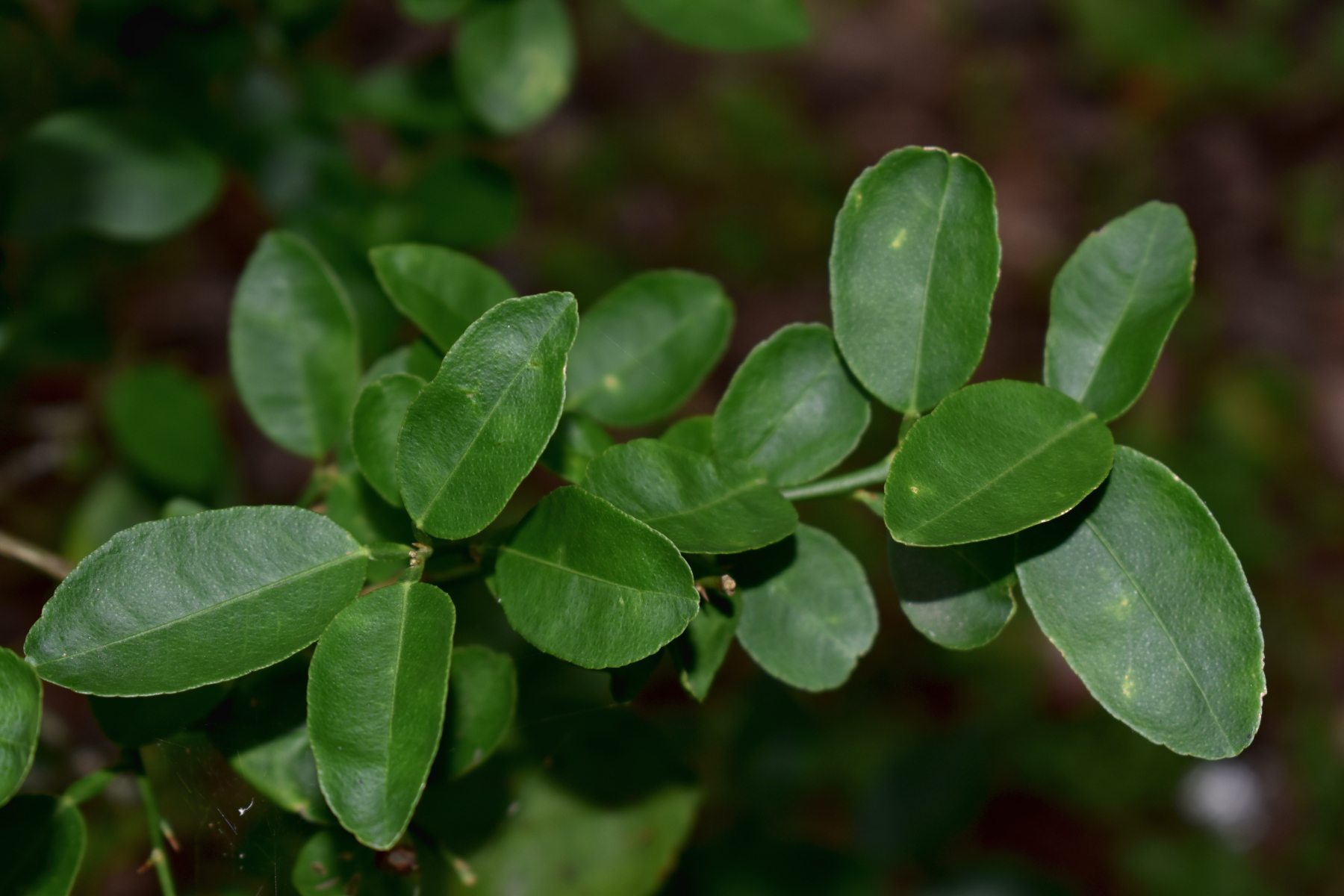Kaadanathi

Scientific Name :
Pamburus missionis (Wall. ex Wight) Swingle
Synonym(s) :
Limonia missionis Wight
Local/Common name(s) :
Kaadanathi
Family :
Rutaceae
Habit :
Tree
Flowering/Fruiting Time :
March-September
Habitat :
Occasionally grown in church premises in the plains
Endemic :
No
Status (IUCN) :
Distribution :
India and Sri Lanka
Nativity :
Indigenous
Uses :
Medicine, Furniture
Description (Morphology) :
Evergreen trees, to 12 m high; spines straight, solitary or in pairs; bark grey, longitudinally fissured, lenticellate; inner bark straw to pinkish; blaze yellowish; branchlets at first green, angular, compressed, the innovation dull or fuscous; later cylindric. Leaves simple, alternate, estipulate; petiole 8-15 mm long, stout, glabrous; lamina 4.5-12.5 x 2-5.5 cm, elliptic or elliptic-oblong, base oblique, acute or cuneate, apex round or emarginate, margin entire or crenulate, undulate, glabrous, coriaceous; lateral nerves 6-8 pairs, slender, pinnate, intercostae reticulate, prominent. Flowers bisexual, small, white, fragrant, in axillary racemes; pedicels slender, glabrous; sepals 4 or 5, deltoid, glandular, glabrous; petals 4 or 5, free, oblong-lanceolate, acute or obtuse, recurved, prominently nerved, glandular, glabrous, pure white; stamens 8 or 10, subequal, filaments free, subulate; anthers linear-oblong, cordate; disc obscure; ovary on a short gynophore, superior, 4-5-celled, ovules 2 in each cell; style stout; stigma capitate or truncate, glandular. Fruit a berry, globose, orange-coloured when ripe, glandular; seeds 4-10, embedded in mucilage.


![DSC_0022[1]](https://green.macfast.org/wp-content/uploads/elementor/thumbs/DSC_00221-ps66l7xe48lpqm7czp8vjzbdbtx23g9g3tfhvdw018.jpg)
![DSC_0023[1]](https://green.macfast.org/wp-content/uploads/elementor/thumbs/DSC_00231-ps66lhbs0kykyptpgtb58wxz9omq8farh3yco5i2b0.jpg)
![DSC_0012[1]](https://green.macfast.org/wp-content/uploads/elementor/thumbs/DSC_00121-ps66ksvz2w14kut7fiqug33ztnz6oalqpqzq6yiass.jpg)